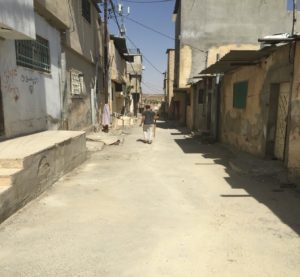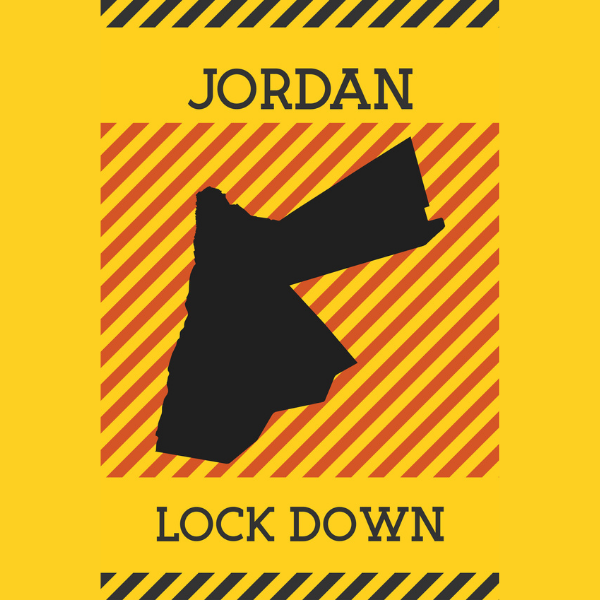This blog is part of the COMPAS Coronavirus and Mobility Forum.
On 8 March, 2020, I left the UK for Jordan to pursue my PhD research on labour market integration of refugees. My original plan was to stay for around three weeks to complete my work, but of course everything turned out differently due to the coronavirus crisis.
Jordan was one of the countries whose tough COVID-19 restrictions lasted longer than elsewhere. The government closed schools, universities, government agencies, and all businesses from mid-March to the first week of May. All borders and airports were closed until mid-August. A partial lockdown meant people were only allowed to leave their house from 10 am to 6 pm until the first week of May. These harsh restrictions may have worked as there were 1,208 cases in total, and only eleven people died in Jordan as of 1 August 2020. However, these numbers increased significantly in a second wave; there were 120,982 total cases and 1,386 deaths due to COVID-19 as of 10 November 2020.
Researchers have pointed out the commonly used mantra “we’re all in this together” implies everyone is at equal risk. I thought of this statement a lot as I carried out my ethnographic research; semi-structured interviews, with Palestinian refugees from March to October 2020.
Who is the ‘we’ and to what extent are ‘we’ all in this together?
According to the United Nations Relief and Works Agency for Palestine Refugees (UNRWA) data, tens of thousands of Palestinians live in ten official camps in Jordan, and socioeconomic conditions of these camps are generally poor, with high population density.
With the help of local NGOs, I visited Jerash refugee camp twice in August and September 2020 to interview residents so I could understand the main challenges they face during the pandemic. The camp covers an area of 0.75 square kilometres, and it is located 5km away from the famous Jerash Roman city.

A street in Jerash camp, taken by Cevdet Acu, August 2020.
One can imagine how difficult it is to implement social distancing and avoiding close contact with other people in this camp. The existing infrastructure has remained unchanged for decades. The streets were very dirty and were strewn with plastic and rubbish. The camp residents told me that there are only ten workers to clean the whole camp of more than 30,000 people.
The camp is known in Jordan as Gaza camp. It was set up as an emergency camp in 1968 to provide shelter for Palestinians who fled from the Gaza Strip, as a result of the 1967 Arab-Israeli war.
Jordan is the only Arab nation that has provided citizenship to Palestinians. However, it does not offer citizenship to Palestinians who originated from the Gaza Strip (about 150,000 people). The camp residents explained that the Jordanian government issues them two-year passports carrying a stamp indicating that the holder is originally from Gaza and entered Jordan in 1967. These people are not allowed to vote or hold public-sector jobs. Moreover, there are a number of services and professions such as doctors, teachers, and engineers that ex-Gazan refugees are excluded from, regardless of their qualifications. Most people in the camp work in temporary manual labour jobs such as construction or working in food service, and they have no benefits or job security. As a result, not only do the camps physically isolate the Palestinian refugees from the Jordanians but also poor working and living standards of the camps separate the refugees from the rest of the society.
I was told that many refugees in Jerash camp have lost their jobs in the industries which have shut down during the COVID-19 preventive measures. According to the UNRWA (2020) report, almost half of the respondents (49.6 per cent) indicated that their work disrupted by COVID-19 with a significant difference between females (75 per cent) and males (37 per cent) during the COVID-19 crisis. Asia, a 48-year-old camp resident, highlighted the lack of socio-economic assistance during the COVID-19 restrictions, and she pointed out: “we did not have any financial support from the government, and UNRWA did not provide enough basic services for people in the camp. We were alone; we only tried to help each other in the camp.”
The Jordanian government announced a five-day nationwide lockdown starting November 11, 2020 as a result of huge new COVID-19 cases recently. These new restrictions may increase refugees’ socio-economic vulnerability as there is no certain programme to alleviate refugees’ poor condition in near future. As a result, it may be true that many people have been affected by COVID-19 and its measures, but not everyone has been experiencing this crisis the same way. I expect that this piece may contribute to the discuss how to mitigate refugees’ vulnerability during the public health crisis in Jordan.
Cevdet Acu is a PhD candidate in Economics. He is interested in refugee economies, immigrant workers, and economic development. His focus is on the macroeconomic influence of displaced people on receiving countries. His research is concerned with the question of how Syrian refugees impact the labour market in host countries, particularly in Jordan, Lebanon.
